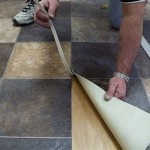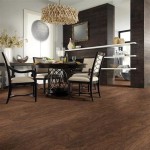Flooring That Looks Like Tile But Isn't
The flooring industry continually evolves, presenting homeowners with an ever-expanding array of options. One particularly popular trend involves materials that mimic the aesthetic of tile without possessing the inherent characteristics – and potential downsides – of actual ceramic or porcelain tile. These alternatives often offer improved comfort, ease of installation, and cost-effectiveness, making them attractive choices for various applications. This article explores several flooring types that successfully emulate the look of tile, detailing their features, advantages, and suitability for different spaces.
When considering flooring options, the initial appeal often lies in the desired visual outcome. Tile, with its clean lines, geometric patterns, and diverse range of colors and textures, is undeniably a stylish choice. However, the cold, hard surface of tile, along with the potential for cracking and grout maintenance, can be deterrents for some homeowners. The alternative flooring types discussed herein aim to address these concerns while retaining the coveted tile-like appearance.
Luxury Vinyl Tile (LVT) and Luxury Vinyl Plank (LVP)
Luxury vinyl tile (LVT) and luxury vinyl plank (LVP) represent a significant advancement in vinyl flooring technology. Unlike traditional sheet vinyl, LVT and LVP are manufactured in individual pieces, allowing for greater design flexibility and a more realistic replication of natural materials. When designed to resemble tile, LVT offers a remarkably convincing visual impression.
The construction of LVT typically involves multiple layers, including a backing layer for stability, a core layer for durability, a printed design layer that accurately mimics the appearance of tile (including variations in color and texture), and a wear layer that protects the surface from scratches and stains. The wear layer is a crucial factor in determining the longevity of LVT, with thicker wear layers offering greater resistance to wear and tear. The design layer is often created using high-resolution imagery, capturing the intricate details of natural stone, ceramic, or porcelain tile.
LVT’s advantages over traditional tile are numerous. First, it is significantly warmer and more comfortable underfoot, making it a more appealing option for areas where people spend extended periods standing or walking. Second, LVT is much easier to install, often utilizing click-lock systems that require minimal adhesive and specialized tools. This simplifies the installation process, potentially reducing labor costs. Third, LVT is highly water-resistant, making it suitable for bathrooms, kitchens, and other areas prone to moisture. Unlike tile, which can become slippery when wet, many LVT products feature textured surfaces that provide enhanced slip resistance.
The maintenance of LVT is also straightforward. Regular sweeping and occasional damp mopping are typically sufficient to keep the floor clean and looking its best. Unlike tile, which requires periodic grout cleaning and sealing, LVT does not involve grout lines, eliminating this maintenance requirement. Moreover, LVT is more forgiving than tile in terms of impact resistance. While a dropped object might chip or crack a ceramic tile, LVT is more likely to absorb the impact without sustaining damage.
While LVT offers numerous benefits, it is important to acknowledge its limitations. While it convincingly mimics the look of tile, it does not possess the same inherent hardness or durability. Over time, LVT can be susceptible to scratches and dents, particularly in high-traffic areas. The lifespan of LVT is generally shorter than that of well-maintained tile.
Sheet Vinyl Flooring
Sheet vinyl flooring has been a mainstay in residential and commercial settings for decades. While it may not always be perceived as a high-end option, advancements in printing and manufacturing techniques have allowed sheet vinyl to achieve increasingly realistic tile-like aesthetics. Modern sheet vinyl can effectively replicate the look of various tile styles, including ceramic, porcelain, and even natural stone.
Sheet vinyl, as the name suggests, is sold in large rolls that are cut to fit the dimensions of the room. This minimizes seams, creating a seamless and waterproof surface. When designed to resemble tile, sheet vinyl typically incorporates printed grout lines to enhance the visual effect. These grout lines can be embossed to create a more tactile and realistic feel.
One of the most significant advantages of sheet vinyl is its cost-effectiveness. It is generally less expensive than LVT and considerably cheaper than real tile. This makes it an attractive option for budget-conscious homeowners. Sheet vinyl is also relatively easy to install, although professional installation is often recommended to ensure a smooth and seamless finish. Proper subfloor preparation is crucial for preventing imperfections in the subfloor from telegraphing through the vinyl.
Sheet vinyl is highly water-resistant, making it an excellent choice for bathrooms, kitchens, and laundry rooms. Its seamless construction eliminates the risk of water seeping through grout lines, which can lead to mold and mildew growth. Maintenance is simple and straightforward, requiring only regular sweeping and occasional damp mopping.
However, sheet vinyl does have some drawbacks. It is less durable than LVT and tile, and it is more susceptible to scratches and tears. Heavy furniture or sharp objects can easily damage the surface. While modern printing techniques have improved the realism of sheet vinyl, it typically lacks the depth and texture of LVT or natural tile.
Laminate Flooring
While not traditionally associated with mimicking tile, laminate flooring can be manufactured to resemble tile, particularly stone. This option offers a different set of advantages and disadvantages compared to LVT and sheet vinyl. Laminate is constructed from multiple layers, including a high-density fiberboard (HDF) core, a decorative layer that features a printed image of tile, and a wear layer that protects the surface from scratches and stains.
The visual appeal of laminate flooring that resembles tile largely depends on the quality of the printed image. High-resolution printing and embossed textures can create a surprisingly realistic effect. Laminate "tile" often comes in square or rectangular formats, further enhancing the illusion of real tile. Faux grout lines are typically incorporated into the design to complete the look.
One of the key benefits of laminate flooring is its durability. The HDF core provides excellent impact resistance, making it less susceptible to dents and scratches than sheet vinyl. The wear layer, similar to LVT, plays a crucial role in protecting the surface from everyday wear and tear. Laminate is also relatively easy to install, typically utilizing click-lock systems that require minimal tools or adhesive.
Laminate is a cost-effective flooring option, generally falling between sheet vinyl and LVT in terms of price. It is also relatively easy to maintain, requiring only regular sweeping and occasional damp mopping. However, laminate is not as water-resistant as LVT or sheet vinyl. Exposure to excessive moisture can cause the HDF core to swell and warp, leading to irreversible damage. For this reason, laminate is not recommended for bathrooms or other areas prone to standing water.
Another potential drawback of laminate flooring is its sound transmission. Laminate can be quite noisy to walk on, particularly in rooms with hard surfaces. This can be mitigated by installing an underlayment beneath the laminate, which helps to absorb sound and provide cushioning.
Considerations for Choosing a Tile Alternative
Selecting the right flooring material involves carefully weighing various factors, including aesthetics, durability, cost, installation requirements, and maintenance needs. When considering a tile alternative, it is essential to assess the specific needs of the space and the intended use. For high-moisture areas, LVT or sheet vinyl are generally the preferred choices due to their superior water resistance. For areas with heavy foot traffic, a durable LVT or laminate with a thick wear layer is recommended.
The desired aesthetic also plays a significant role in the decision-making process. LVT typically offers the most realistic replication of tile, with a wide range of colors, patterns, and textures available. Sheet vinyl provides a more budget-friendly option, while laminate offers a durable alternative that can mimic the look of stone tile. Ultimately, the best choice depends on the individual's priorities and budget.
Installation considerations should also be taken into account. While all three flooring options are relatively easy to install compared to traditional tile, professional installation may be necessary to ensure a flawless finish, particularly for sheet vinyl. The subfloor must be properly prepared to provide a smooth and level surface for the flooring material.
Finally, ongoing maintenance is an important factor to consider. LVT and sheet vinyl are relatively low-maintenance, requiring only regular sweeping and occasional damp mopping. Laminate requires similar maintenance, but it is important to avoid excessive exposure to water. Unlike tile, these flooring options do not require grout cleaning or sealing, saving time and effort in the long run.

Wood Look Tile Flooring All You Need To Know Oasis

Unbiased Luxury Vinyl Plank Flooring Review Cutesy Crafts

The 57 Diffe Types And Styles Of Laminate Flooring

The Best Waterproof Flooring That Isn T Tile

Tips For Achieving Realistic Faux Wood Tile Chris Loves Julia

2024 Bathroom Flooring Trends 20 Updated Styles Inc
:strip_icc()/cdn.cliqueinc.com__cache__posts__197136__this-jaw-dropping-home-decor-trend-will-dominate-pinterest-1829237-1467898610.700x0c-87daaba1c5a749dd94877a7bb225cd00.jpg?strip=all)
Our Favorite New Trend Contrast Floors

Porcelain Wood Look Tile Vs Luxury Vinyl Plank An Honest Comparison

Porcelain Wood Look Tile Vs Luxury Vinyl Plank An Honest Comparison

9 Best Tile Options For Your Bathroom Floor
Related Posts








